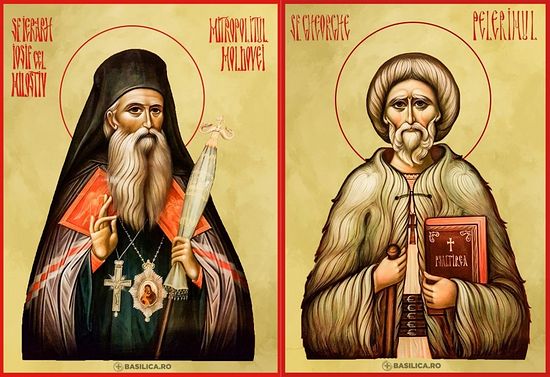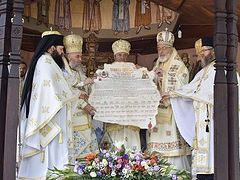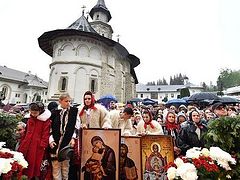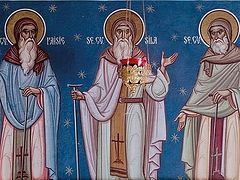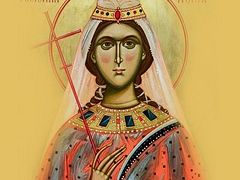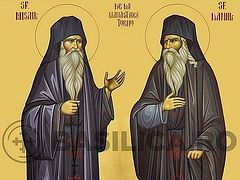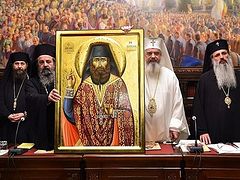Bucharest, October 6, 2017
The Holy Synod of the Romanian Orthodox, meeting in a working session yesterday at the patriarchal residence in Bucharest under the chairmanship of His Beatitude Patriarch Daniel, decided to two canonize two new saints of the Romanian Church, Basilica News Agency reports.
Metropolitan Iosif Naniescu has been canonized under the name of the Holy Hierarch Joseph the Merciful, the Metropolitan of Moldova, to be celebrated on January 26 (new style), and Gheorghe Lazar the Ascetic under the name of St. George the Pilgrim, to be celebrated on August 17 (new style).
The new saints had earlier been proposed for canonization at the June 15 meeting of the Metropolitan Synod of the Church of Moldavia and Bukovina. The same local synod also made a proposal to include St. Neophytos the Recluse of Cyprus in the Romanian Orthodox calendar, which the Romanian Holy Synod also accepted yesterday. He will be celebrated on September 28 (new style), beginning in 2019.
The Holy Synod earlier resolved on June 6, 2016 to glorify and add to the calendar of saints four great ascetics connected with Putna Monastery: Metropolitan Jacob Putneanul of Moldova, and the Venerable Fathers Silas, Nathan, and Paisios of Sihăstria Putnei Monastery. St. Paphnutius the Iconographer was canonized on August 6.
***
Metropolitan Joseph was born in 1820 into the family of the priest Ananias Mihalache, receiving the name of John at Baptism. Left fatherless at the age of 1, he was raised by his mother, Theodosia, until at the age of 10 he was entrusted to the care of a relative, Hierodeacon Theophylact of the Frumoasa Monastery in Bessarabia.
Accompanied by him, in 1831 he went to Iaşi to live in the Monastery of St. Spyridon, which was then under the leadership of the bishop Varlaam Cuza Sardeo
Joining him on this, in the year 1831 he came to Iasi, living in the Monastery ‘St. Spiridon’, which is then under the leadership of Archbishop Varlaam Cuza Sardeon. He then followed Hierodeacon Theophylact to the Monastery of the Holy Prophet Samuel in Focşani, where, on November 23, 1835 he was tonsured into monasticism by Bishop Chesarie, and the next day he was ordained a hierodeacon.
He attended the courses of the newly-established seminary in Buzău from 1836 to 1840, then those of St. Sava’s in Bucharest from 1840 to 1847. He fulfilled the obediences of the rector of Şerbăneşti-Morunglavu Monastery from 1849 to 1857, and Găiseni Monastery from 1857 to 1863, was ordained a hieromonk on August 29, 1850, and elevated to the rank of archimandrite in 1860.
For a short period (1863-1864) he was the abbot at Sărindar Monastery in Bucharest. He also worked as a professor of religion at the Gh. Lazarus School (1864-1866), the “Matei Basarab” Lyceum (1866-1873) and at the “Carol I” School (1867-1873).
On April 23, 1872, he was consecrated as a bishop, and on January 18, 1873 he was appointed bishop of Arges, where he pastored for a short time, until his election, on June 10, 1875, as metropolitan of Moldavia. He was installed in Iaşi on July 6, 1875, where he shepherded until his death on January 26, 1902.
***
Gheorghe Lazar was born in the village of Șugag, in Alba county, in 1846. He married at the age of 24 and was blessed by God with five children. He led an honest Christian life of work, prayer, fasting, and alms.
He went to worship at the Tomb of the Lord in 1884, and remained at the monasteries of the Jordan and Sinai wilderness for over a year. Then, after a year and a half on Mount Athos, he returned to his country. He lived with his family for a few years, and having put his children’s affairs in order, he retired as a pilgrim to the monasteries of Moldavia in 1890.
He established himself permanently in the city of Piatra Neamţ, living in asceticism like a true hermit in the bell tower of Stephen the Great in the middle of the city for 26 years, until his death. There he labored alone in fasting and prayer, summer and winter, without fire, without bed, without a coat, and without shoes on his feet, living in God's grace.
He reposed on August 15, 1916 and was buried in the town cemetery. In the summer of 1934 his remains were placed in Văratec Monastery, in northeastern Romania. He is known as “Grandpa Gheorge” among the pious faithful. His relics, kept beneath the main church in the monastery, are fragrant.

